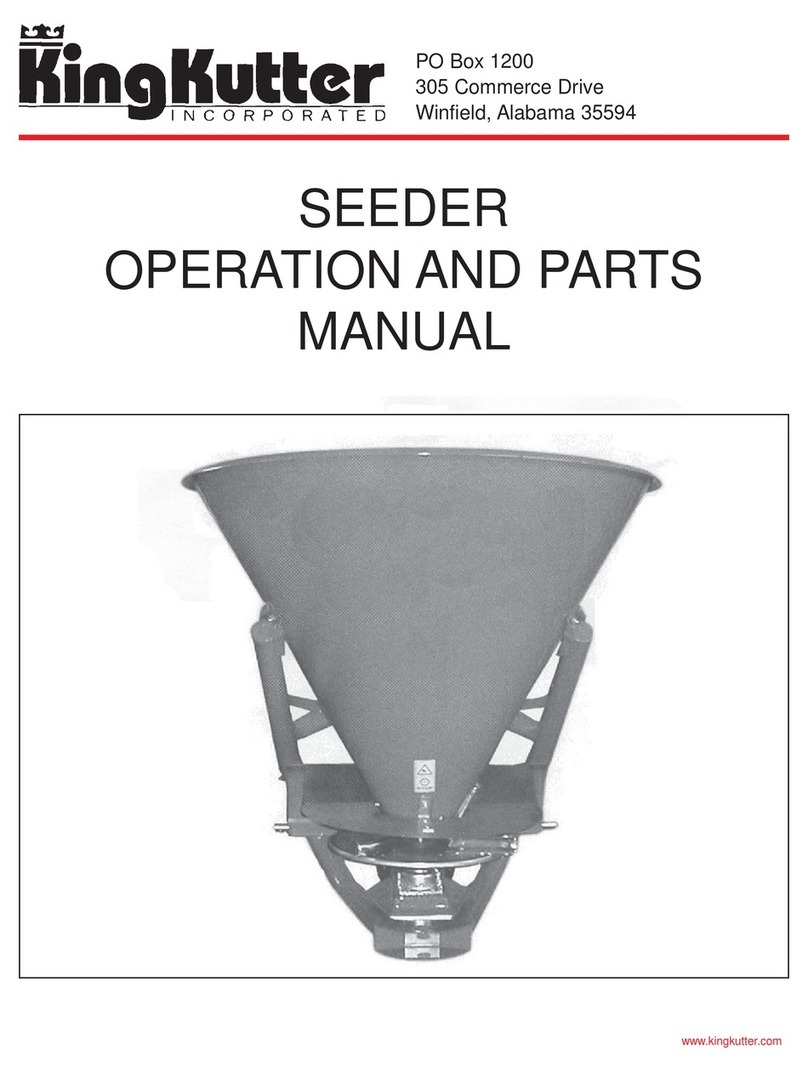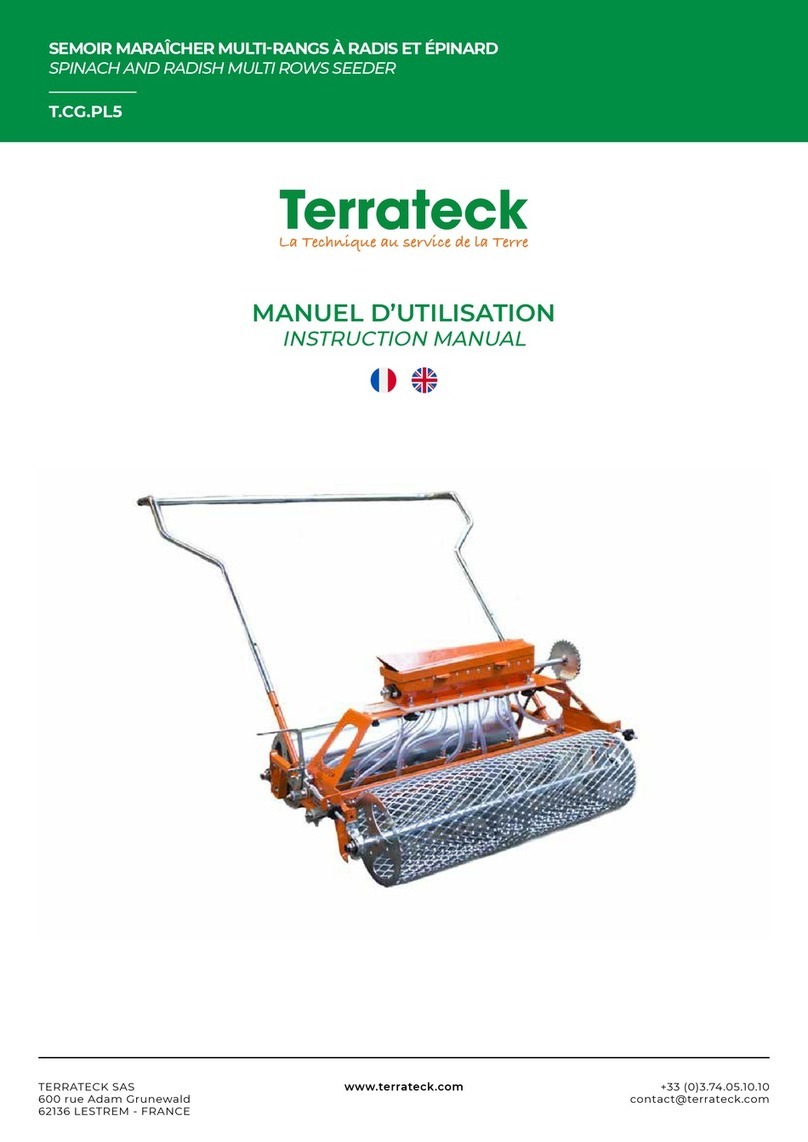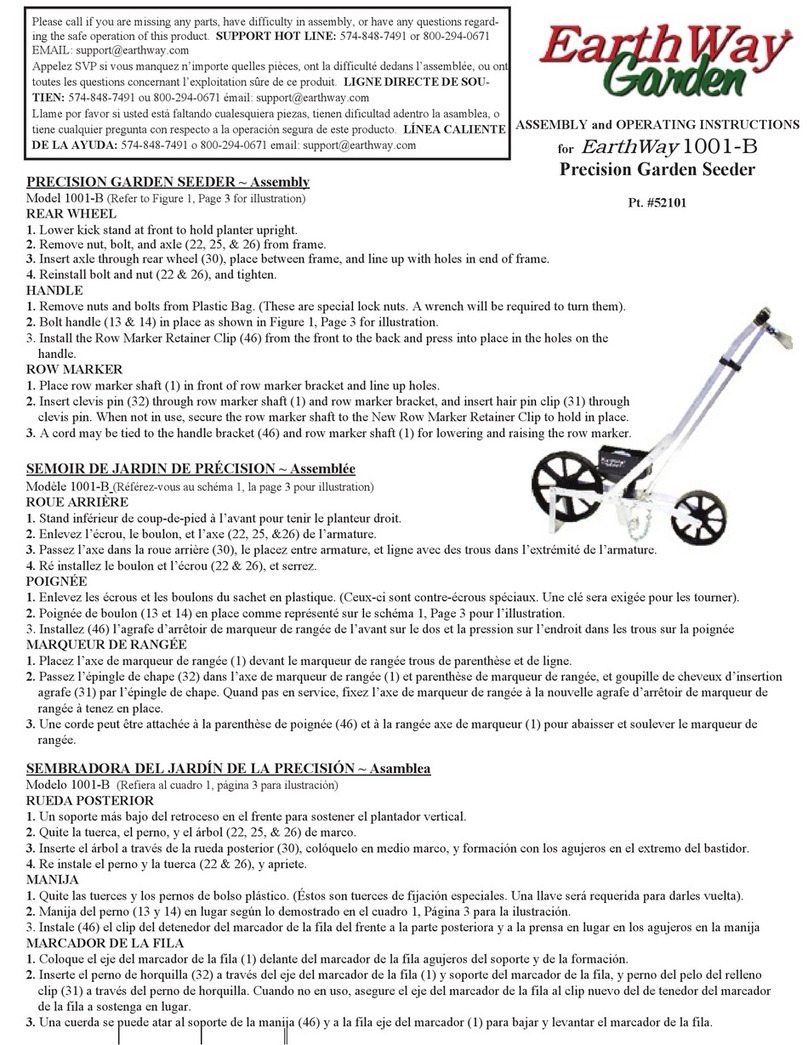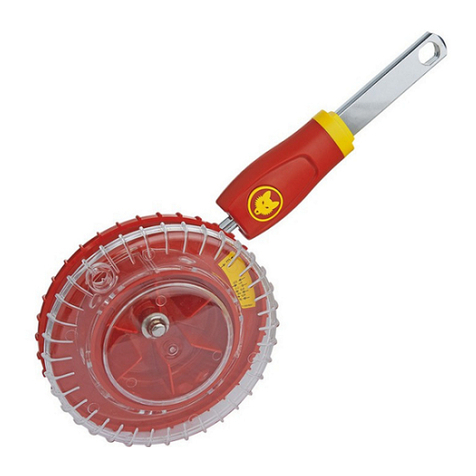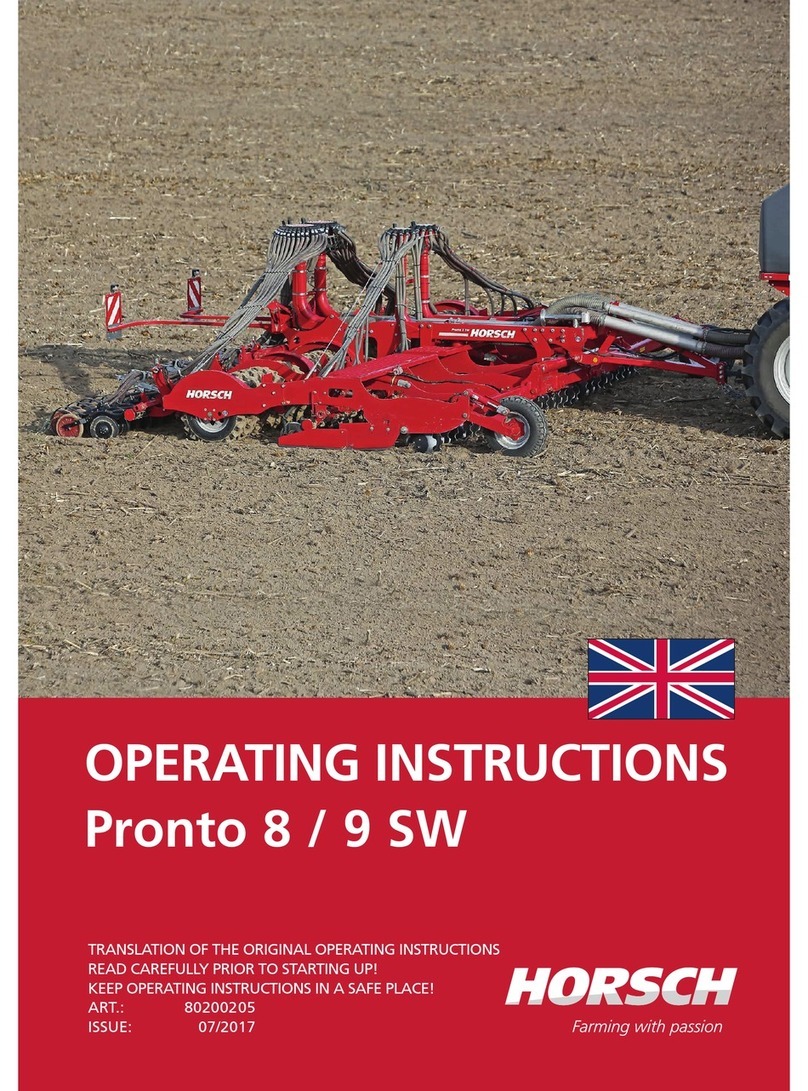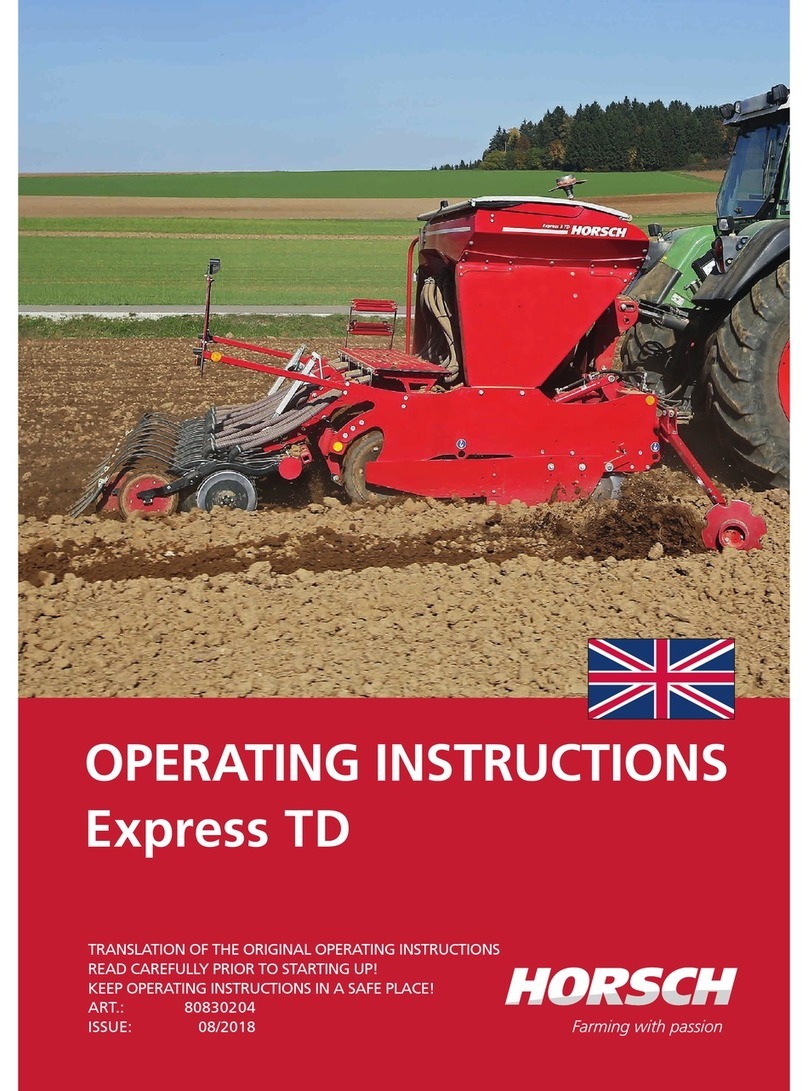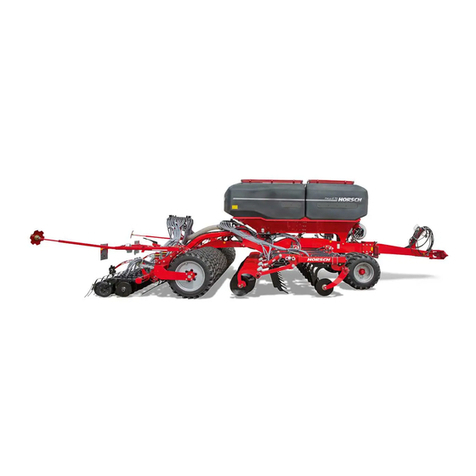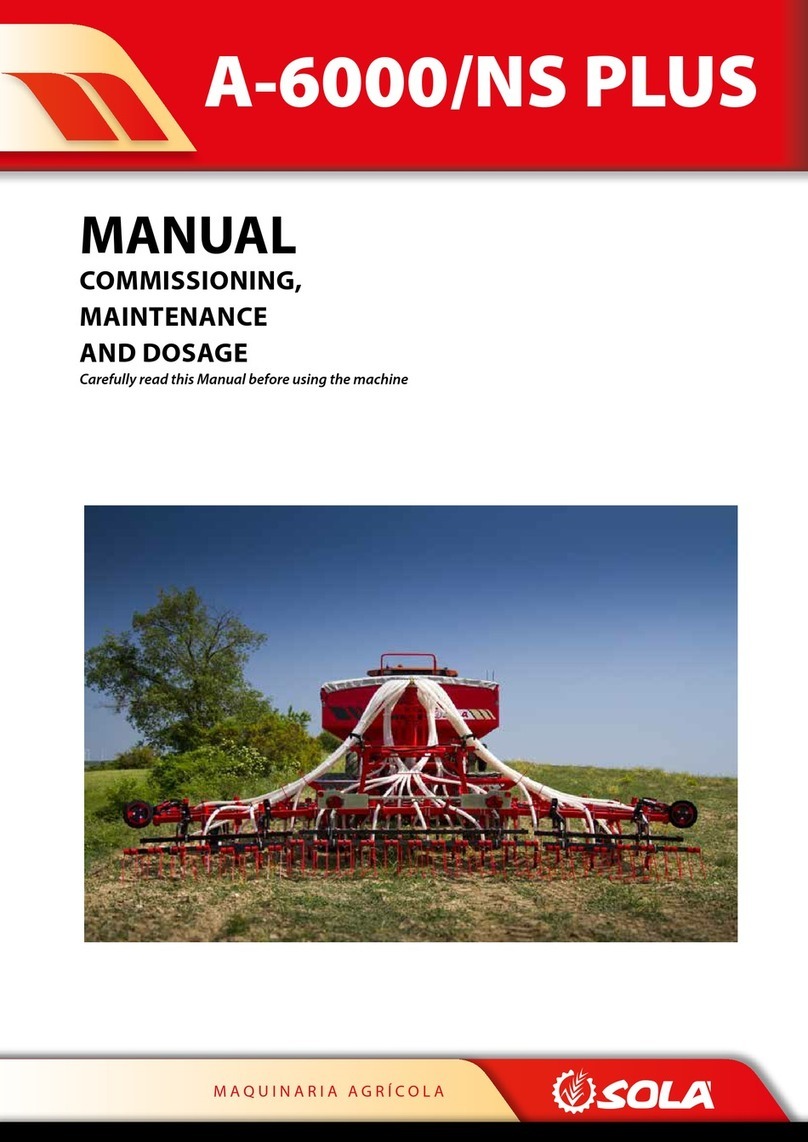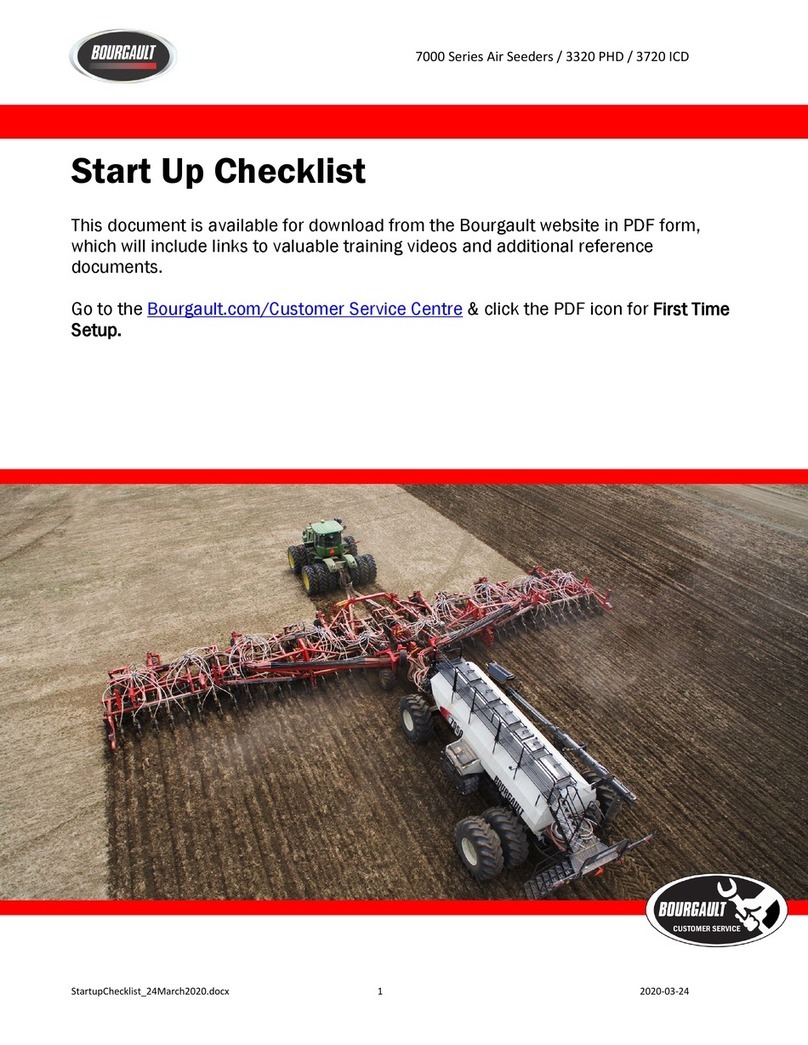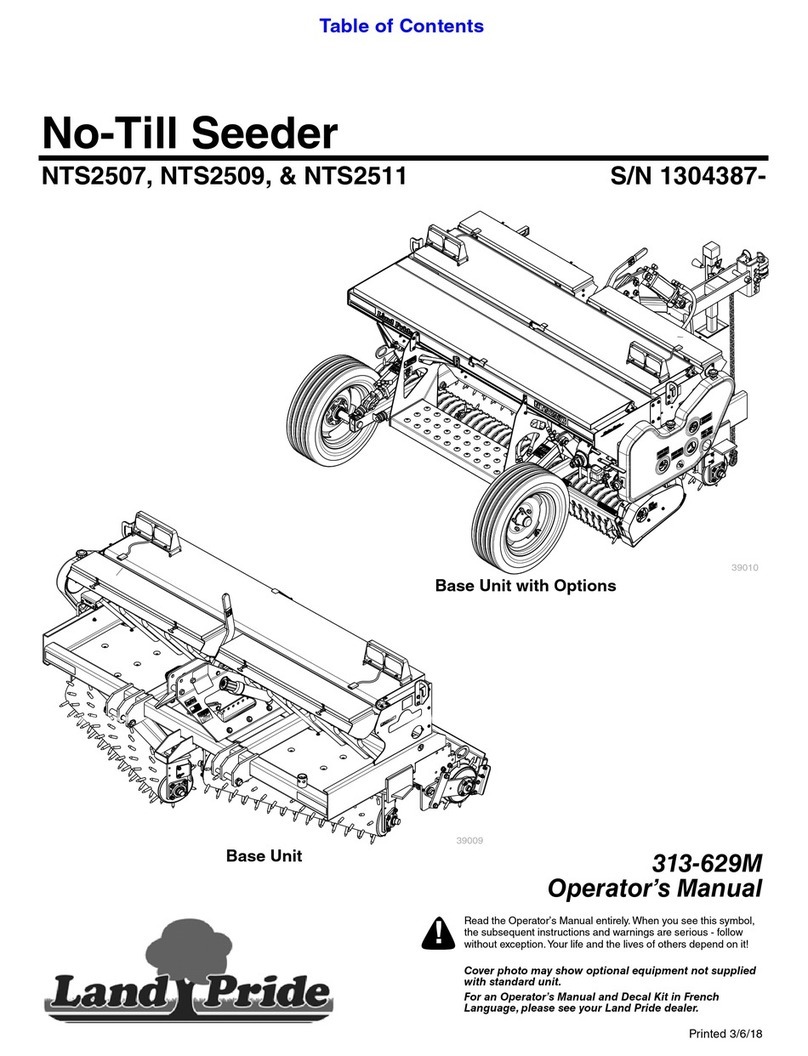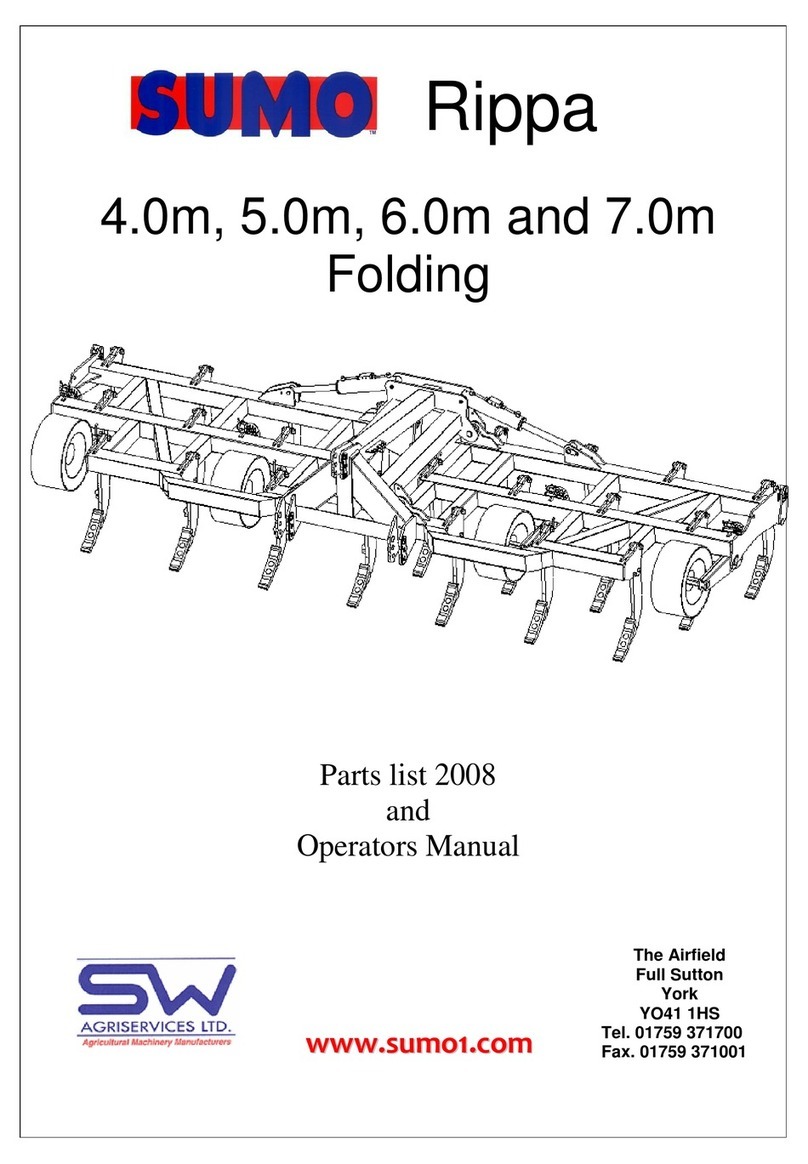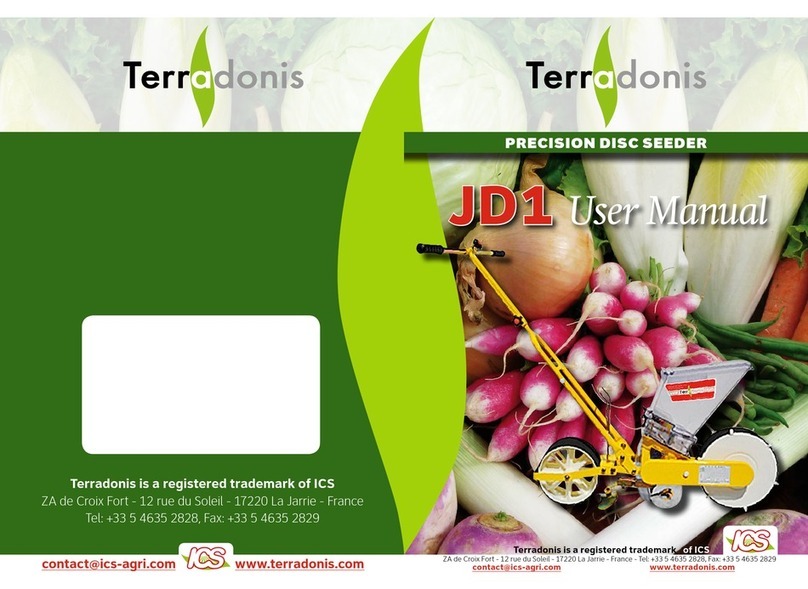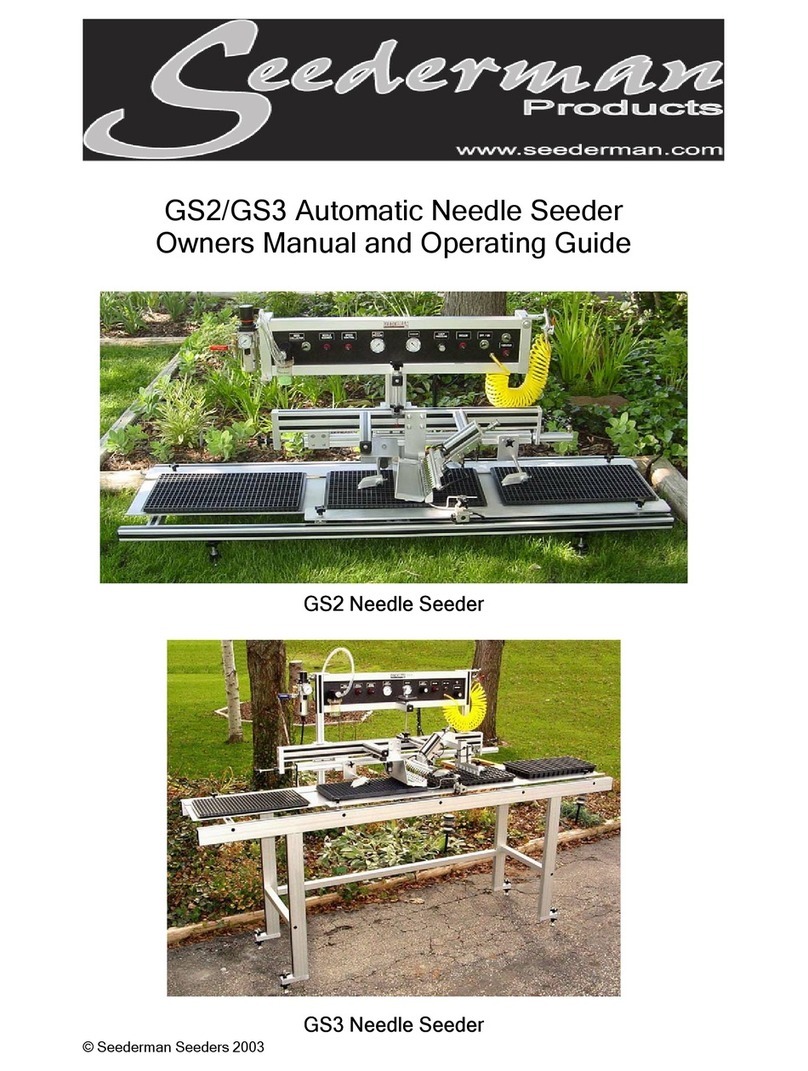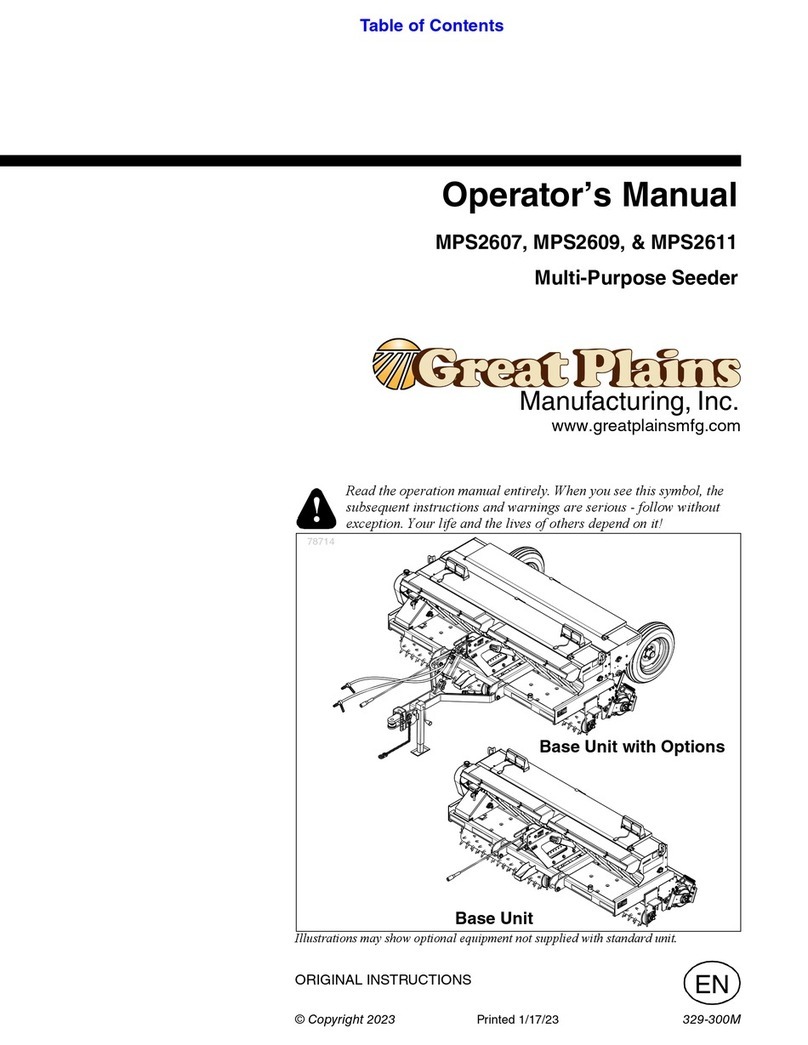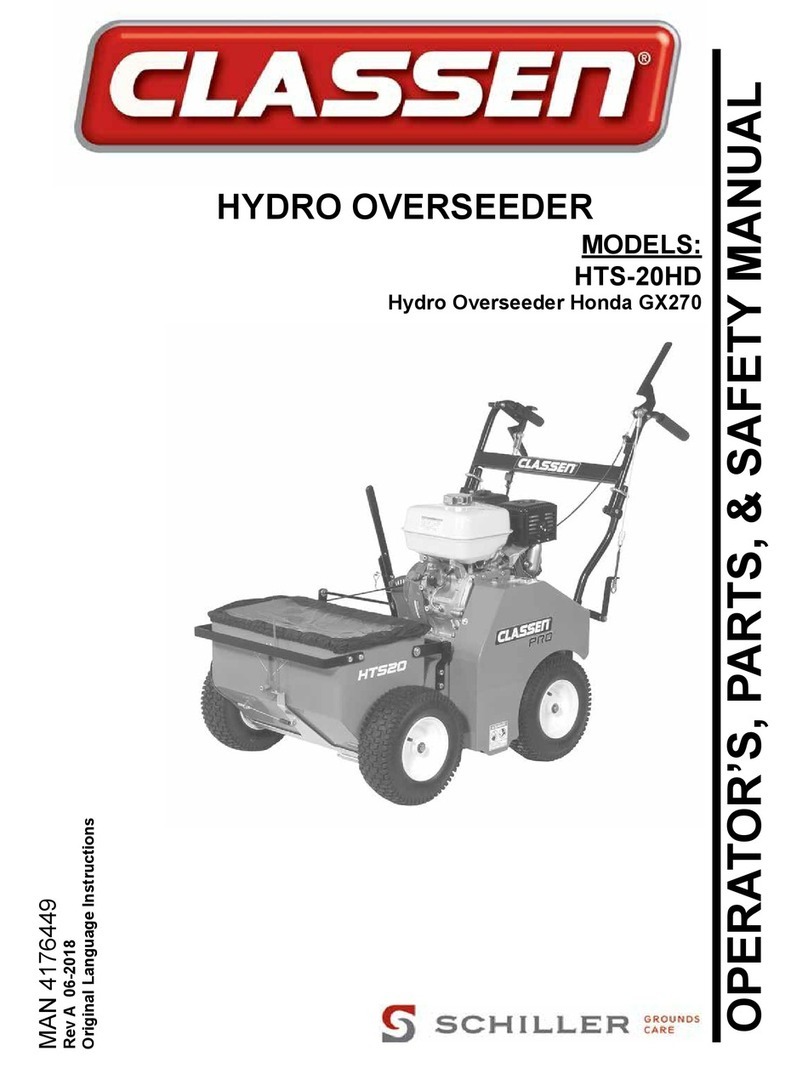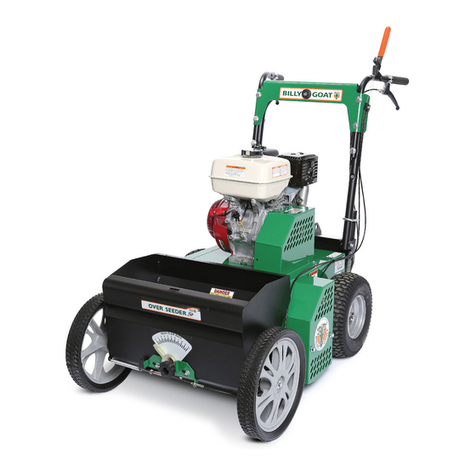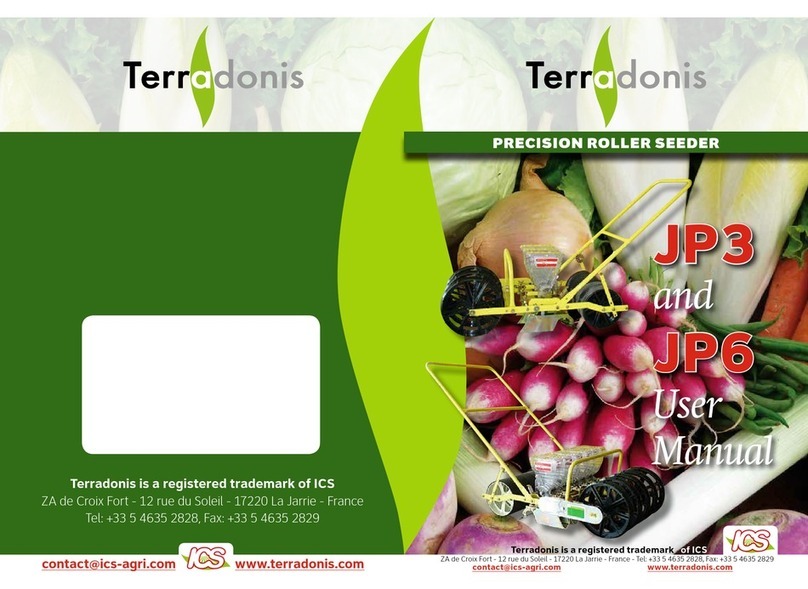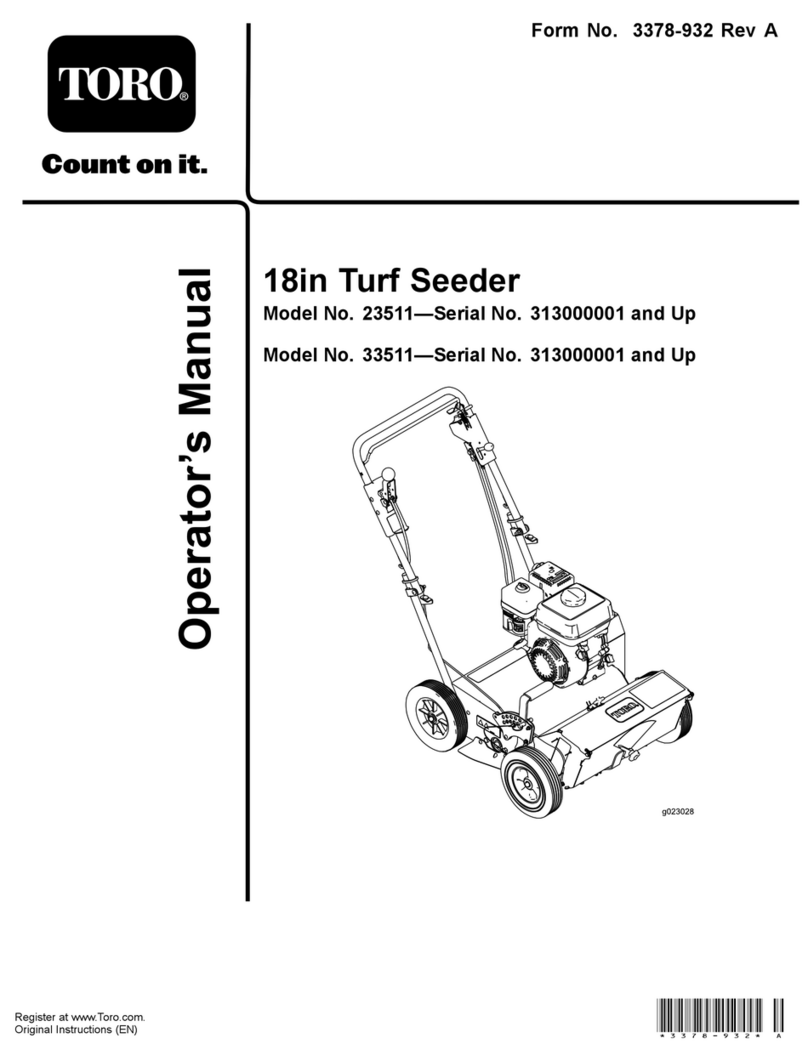
Table of contents
Introduction...................................................4
Foreword ........................................................4
Notes on representation .................................4
Service............................................................5
Warranty claim processing .............................5
Consequential damage...................................5
Safety and accident prevention ..................6
Intended use...................................................6
Qualication of personnel...............................7
Children in danger ..........................................8
Personal protective outt................................8
Safety in trac................................................8
Safety in operation..........................................9
Fertiliser and dressed seed ..........................13
Environmental protection..............................13
Retrots ........................................................14
Care and maintenance .................................14
Danger zone.................................................15
Safety stickers ..............................................16
Technical data.............................................19
Type plate.....................................................21
Requirements for the tractor.........................25
Structure......................................................28
Overview.......................................................28
Hydraulics.....................................................29
Identication of hydraulic hoses ...................35
Aluminium clips.............................................35
Lighting.........................................................36
Instruction stickers........................................37
Commissioning...........................................41
Delivery.........................................................41
Transport ......................................................41
Installation ....................................................41
Operation.....................................................42
Commissioning / Tractor change..................42
Adapting the propshaft...............................42
Adjust the height of drawbar eye/
spherical cap..............................................43
Connecting/Parking ......................................43
Connecting ...................................................43
Transport position.........................................45
Parking .........................................................46
Folding..........................................................48
Unfolding....................................................48
Folding.......................................................48
Use in the eld..............................................50
At the headland..........................................50
Checks..........................................................52
Pneumatic system......................................53
Hopper..........................................................53
Railing...........................................................54
Solid fertiliser facility.....................................54
Fan - fertiliser ...............................................56
Direct drive.................................................56
Fan with PTO-shaft pump..........................57
Maestro 24 SW..........................................58
Maestro 36 SW..........................................58
Fan speeds................................................61
Fertiliser quantities.....................................61
Retightening the fan ange........................62
Fan - vacuum................................................63
Seed on Demand system .............................64
Fertiliser metering unit...............................67
Rotors...........................................................67
Rotor change................................................68
Rotor change with gate valve .......................68
Rotor change at full hopper
without gate valve.........................................69
Adjusting the sealing lip................................69
Maintenance of metering unit .......................70
Fertiliser coulter............................................71
Single-disc coulter (option) ........................73
Aligning the seed bar....................................77
2
